THE MYSTERIOUS ‘ABACO PARROTS’ OF NASSAU
Where did they come from, and when did they arrive on New Providence? And how? The conventional wisdom is that the Cuban Amazon or rose-throated parrots (Amazona leucocephala) exist in the Bahamas only on South Abaco (from Marsh Harbour down to the National Park) and Inagua. The species is arguably (but not as yet officially) divisible into two subspecies. On Inagua, the parrots behave as you’d expect, including in their breeding and tree-nesting habits. Conversely, the parrots of Abaco nest underground in limestone holes and crevices in the National Park at the southern end of the island. This very distinctive habit makes them vulnerable to predators of course. On the other hand, there is good protection from the forest fires that pass rapidly and harmlessly through the scrub above them, yet which would make tree-nesting extremely hazardous. It would be interesting to know if the parrots of Abaco have always done this; or whether they were originally tree nesters who adapted their behaviour to meet changed conditions in their habitat.

WHEN DID THE PARROTS ARRIVE IN NASSAU?
The BAHAMA PARROTS OF NASSAU LOCATOR group was set up on Facebook in early 2012 by Shelley Cant-Woodside. Lynn Gape of the Bahamas National Trust (BNT) was also involved from that early stage. The stated purpose of the group was “to help locate the increasing reports of parrot sightings on NP in general and Nassau in particular”. This suggests an increased awareness of an existing intrusion of the colourful and noisy Cuban parrots, a species hard to mistake or ignore. At the other end of the time-scale for their arrival on NP, when omniscient and much-missed ornithologist Tony White published his comprehensive checklist for each Bahama island in his Birder’s Guide to the Bahama Islands (inc. TCI) in 1998, no record existed of a sighting of a Bahamas parrot on NP. Abaco and Inagua, yes. But nowhere else. So that gives less than a 14-year window for a parrot influx.

SO HOW DID THEY GET TO NP?
There are realistically two possibilities. Either two or more captive parrots on NP (including a male and a female!) escaped or were released on NP; or were brought to NP and freed. Alternatively, says another theory, a flock of parrots in the Abaco National Park were caught up in a hurricane, and involuntarily relocated to the nearest land in the confusion. It could of course be both (Helpful Reader: “…or neither?”). Shelley tells me: “I know that ARDASTRA GARDENS (Nassau Zoo) positively identified Bahama Parrots on New Providence as early as 2004, which is when I worked there. We were told at the time that some folks had purposely released them. I doubt that it is related to hurricanes”.

RELEASED BIRDS
This theory is by far the most likely one, and is supported by anecdotal evidence. Even so, it is not entirely straightforward. I don’t know what protection was afforded the parrots in the Bahamas in the early 2000s, but certainly there were captive birds; and indeed there was and is a market for this species of Amazona further afield – Cuba for example, and (to my huge surprise) the UK, where a single bird may be had for £380 ($500). But even assuming the existence of a few males and females, they would have needed to breed. And there are few, if any, contemporary reports of parrot nests in trees; or of chicks or juveniles. If these bright, noisy birds were new to Nassau around 2004, they must surely have attracted some attention if they were breeding and spreading from then on.

HURRICANE MAELSTROM
I have taken a look at several Bahamas hurricanes and tropical storms between 2004 (the Ardastra ID) and 2012 (Locator page founded). Tracking and intensity information rules out most of them. It’s fair to say that the paths of the storms are almost invariably from the south / east veering west / northwards. You might think that a parrot flock could not be carried by hurricane 50 miles in the opposite direction, from the south of Abaco to New Providence. But perhaps disorientation and self-preservation play their parts – a psittacine instinct to fly away from the danger, in the opposite direction from its path, towards where the weather is calmer.
Hurricane Irene tracking path
WHAT’S THE ANSWER, THEN?
To check the rival theories, I asked well-known scientist and parrot expert Caroline Stahala for her views. This authoritative opinion leads to the conclusion that the Parrots of Nassau result from escape, or release from captivity, perhaps supplemented by later importation.
“I know people like the ‘hurricane’ theory but there isn’t much support for it, especially since we did get reports through-the-grapevine that someone had released these birds. They did show up after a serious hurricane season Frances/Jeanne etc [2004] but thats probably because their housing in Nassau was damaged or the person who had them couldn’t take care of them properly. During hurricanes, parrots don’t fly away, they hunker down and ride out the storm. Amazon parrots absolutely do not like flying over large bodies of water, their wings are designed to be super manoeuverable in forests, not for distance flights, so the chance that they would fly over water during a hurricane is very very slim. Not to mention a whole group of them (6-12)”.
On the other hand, it’s not that simple. Lynn Gape (BNT) comments: “I heard the hurricane theory differently. I was told that someone thought that the parrots flew to Nassau with a flock of White Crowned Pigeons after one of the hurricanes. The thought being that although they do not like to fly over water, they were really in need of food and felt there would be strength in numbers for the flight”.

WHERE CAN I FIND THEM?
Almost all reported sightings have been in East Nassau. Occasional sightings have been reported outside that area but the overwhelming majority are within the RED oval on the map below, with the hotspot area within the ORANGE oval. I base this both on the Locator page and also the somewhat sporadic eBird reports.

SO THE NASSAU PARROTS MUST BE BREEDING, RIGHT?
Parrot sighting reports are increasing but that fact, as I have discovered on Abaco, does not necessarily suggest an increasing population. Increased citizen enthusiasm and awareness is also linked to increased bird reporting, as is the advent of simple reporting systems such as social media posts, eBird and so forth. However the impression I get from reading the Locator posts is that, while evidence of actual population growth is unclear, numbers may be being maintained despite an inevitable attrition rate. The Locator has sad images of 2 known casualties, causes of death unknown.

WHERE ARE THEY NESTING, THEN?
It seems that, unlike Abaco, there is no secluded forested area on NP with suitable limestone terrain to provide underground caves. Therefore the parrots must be finding other suitable cavities, the most obvious being in trees. As far as I can make out, there have been very few – if any – reports of juvenile parrots being seen. For that matter, there have been none of nesting behaviour either – a pair of parrots in a tree preparing a nest, taking turns on the eggs, foraging for food for the chicks, or squawking flying instructions at the fledglings**. So perhaps there is an unfrequented area of coppice on NP, some distance from the bustle of Nassau, where all this takes place in midsummer. By the time they put in an appearance in the town, they have already grown to young adulthood.
**COMMENT On the question of evidence of nesting behaviour, Lynn Gape says: “I have seen four parrots in my garden, and they exhibited behaviour similar to what I have seen with adult and juvenile parrots on Inagua – calling for food, and adults feeding them. So possibly there may have been some successful breeding”.
This recent photo (below) by Ian Coerbell shows the sort of tree cavity that according to Caroline Stahala might be a possible nesting site. She says:
“I did document a nesting pair of Abaco parrots in Nassau. The nest was in a tree cavity. However, as long as the birds have been there, the numbers do not seem to have increased. For some reason they aren’t very successful on NP. Melissa Maura rehabbed a young Abaco parrot that was found malnourished & dehydrated in Nassau. She ended up releasing it but we don’t know what happened to it.”

Cat Binks has commented that she believes there is a nesting location in an overgrown lot adjacent within the ‘hotspot’ area. She sees them most evenings, sometimes as many as six. Cat also confirms that “enthusiasm and awareness has increased… I’m getting daily feedback about fly-overs [in the hotspot area]”.
A parrot and chick in a limestone cave nest on Abaco
HOW MANY OF THEM ARE THERE?
The BNT gave this estimate of numbers a few years ago: “There is a very small population (less than ten individuals) on the island of New Providence”. I suspect it is difficult to make a reliable estimate of numbers now. The birds are unbanded, and there is a considerable risk of double-counting when the sightings are of 2 or 3 at a time, in different locations over a very small area. I think it’s probable that the number has reached double figures, and that in any event it is not diminishing despite some casualties.
STOP PRESS On 6 October 2016 New Providence was in the direct path of Hurricane Matthew. Despite the power of the storm, by the following day there was a report of a sighting in Nassau. Today, 9 October, comes a report of a group of 15 – as far as I am aware the highest number sighted together. Maybe they all came together for solidarity… In any event, the sighting confirms that, at least as far as the parrots are concerned, the hurricane has not caused any problems.
Caroline points out that there is a good chance of interbreeding between feral Amazon species in Nassau that ‘hang out’ with the so-called Abaco parrots: “That would basically make the Bahama parrot population a hybrid and not of much conservation use. Having said that, I still think its really neat that the birds are there and I hope everyone enjoys seeing them in a natural setting. Hopefully we can find out more about them in the next few years”.
Lynn comments: “With regards to the interbreeding with feral parrots that does not seem to be a problem at this time – we did at one time see them with a Yellow Nape Amazon but that bird has disappeared; and according to Caroline Stahala they will not breed with the Black-headed Parakeet. We thought that the birds did nest in a large tree right on Parliament Street. Caroline Stahala and Predensa Moore investigated but did not find conclusive proof. However the timing would correspond with the time when Melissa found and took care of the young parrot”.

WHAT ARE THE HAZARDS FOR THE PARROTS?
Numerous, as you’d imagine, especially in an urban setting, though the birds may have adapted their behaviour to an extent to avoid some of the obvious dangers. There is evidence that some birds are already adapting to urban life, as this recent photo shows. Two parrots have teamed up with a black-hooded parakeet (presumably escaped or released from captivity) to investigate a vehicle and maybe play with the windshield wipers… 
STOP PRESS Parrot in a Gumelemi tree, Skyline Heights, Nassau. A great shot by Linda J Clews, with thanks. The parrots have sadly stopped coming to her property since the clearance of coppice to make way for the golf course of the Baha Mar development – an example of the effects of habitat loss on wildlife.
ARE THEY PROTECTED, OR CAN WE CAGE THEM OR SHOOT THEM?
Yes, and no, and definitely not. According to the Bahamas National Trust “Bahama Parrots are protected under the Wild Birds (Protection) Act. It is illegal to harm or capture or offer this bird for sale. The Convention for the International Trade of Endangered Species (CITES) list the Bahama Parrot in Appendix 1 meaning that it is a species which is near extinction or very endangered”.
If anyone would like to know what a flock of these wonderful but uninhibitedly raucous birds sounds like, this is a short recording I made at Bahama Palm Shores, Abaco (an excellent hotspot for them incidentally).
USEFUL LINKS
A true Abaco Parrot at Bahama Palm Shores…

Credits: Shelley Cant-Woodside and Caroline Stahala for information and advice; Locator page members for active or tacit use permissions; photos by Melissa Maura (1, 2, 5); Lynn Gape (3, 7); Sandy Cunningham (4); Neill Pritchard (6, 10); Ian Coerbell (8); Caroline Stahala (9); Tim Colclough (11); Linda Clews (12); Keith Salvesen (13)




















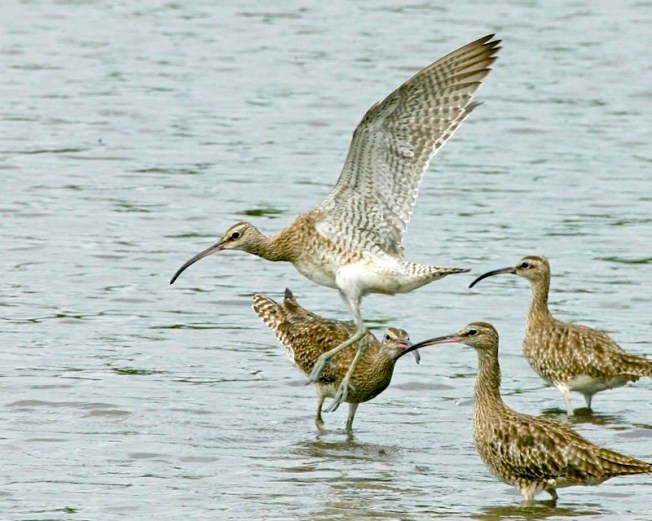








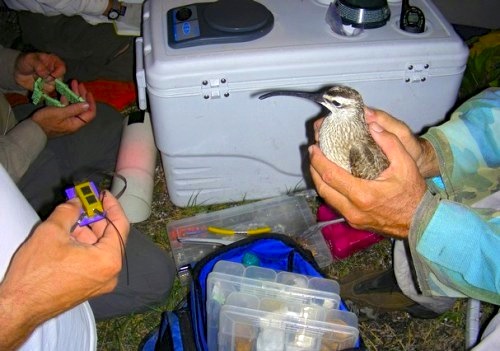





















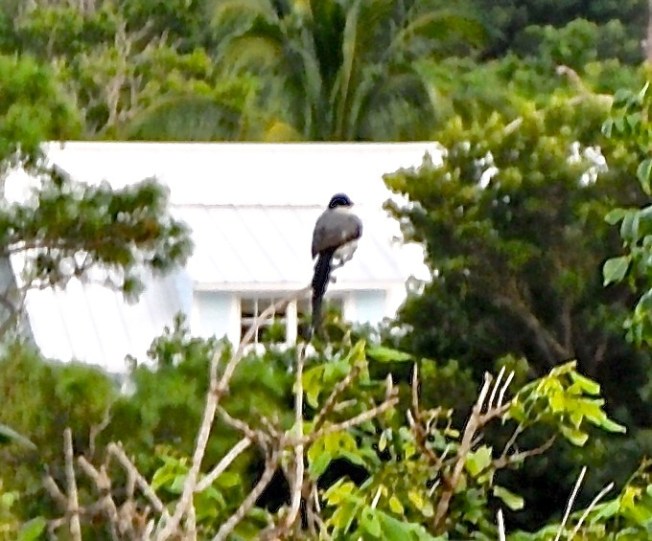

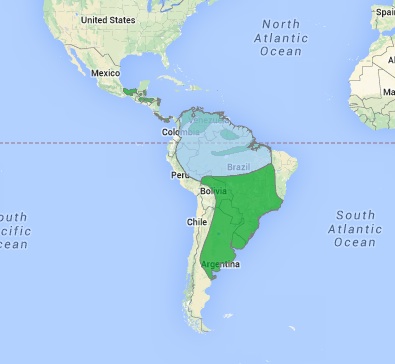




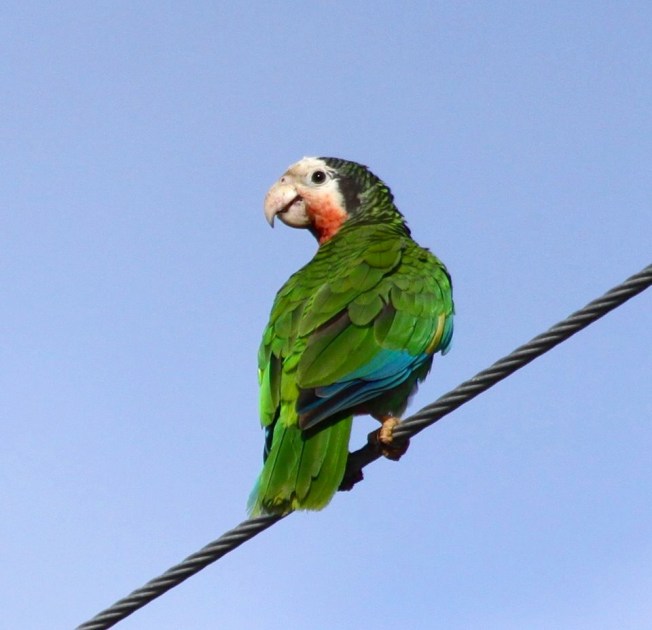









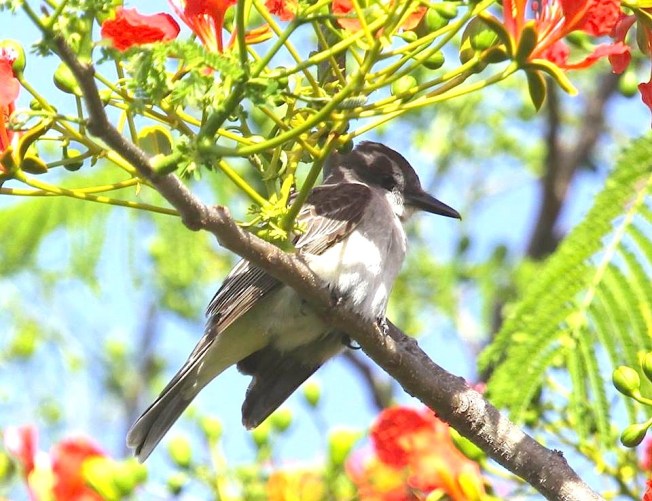




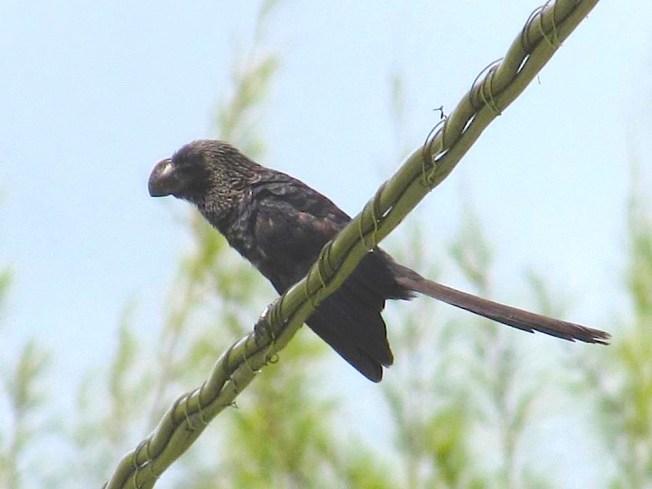


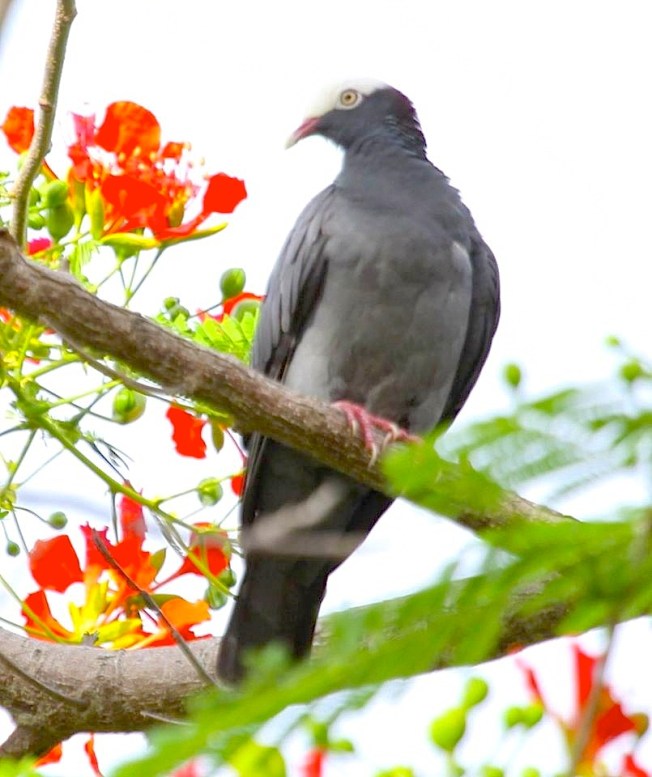

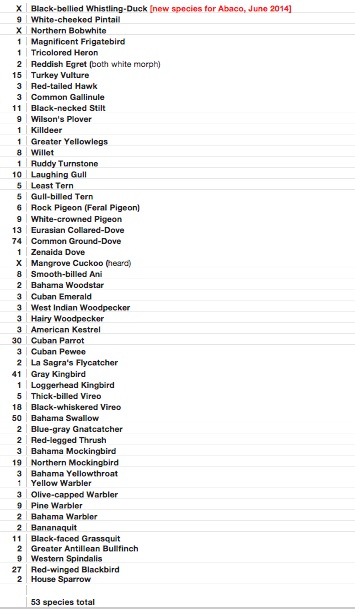









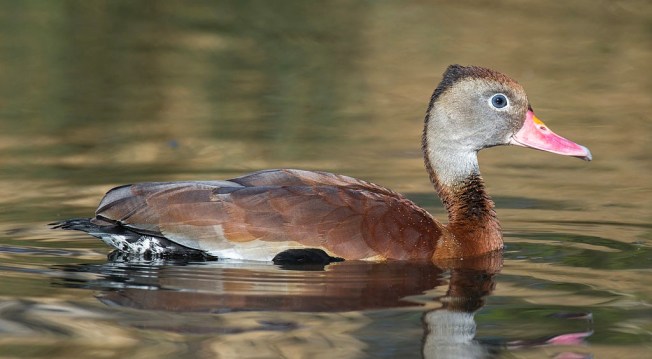
You must be logged in to post a comment.